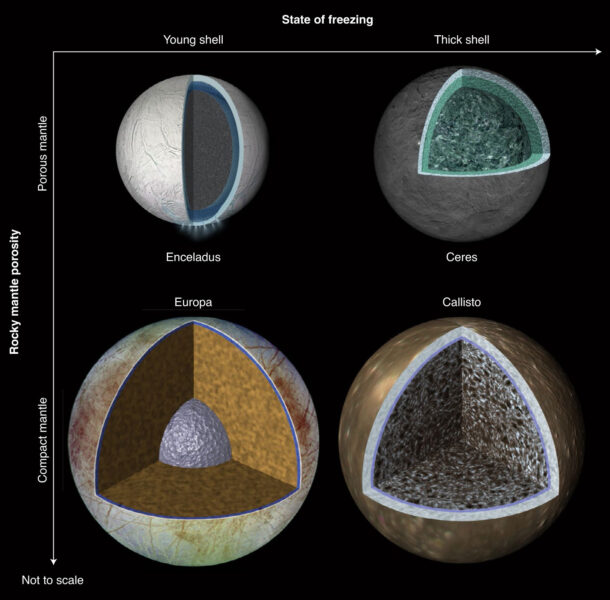

Images from the two Voyagers revealed a surface brighter than that of Earth's moon, crisscrossed with numerous bands and ridges, and with a surprising lack of large impact craters, tall cliffs, or mountains.

#Does callisto experience tidal heating full#
The spacecraft snapped a full global image of Europa from a distance of about 1.2 million miles (2 million kilometers).Ī few months later, Voyager 2 had its closest encounter with Europa on July 9, 1979. Voyager 1's closest approach to Jupiter occurred on March 4, 1979. This is thought to result from the sublimation-driven degradation of small landforms, which is supported by the general deficit of small impact craters and the presence of numerous small knobs, considered to be their remnants.This picture of Europa was taken on March 4, 1979, from a distance of about 1.2 million miles (2 million kilometers) by NASA's Voyager 1. At a small scale, the surface is varied and made up of small, sparkly frost deposits at the tips of high spots, surrounded by a low-lying, smooth blanket of dark material. Prominent surface features include multi-ring structures, variously shaped impact craters, and chains of craters (catenae) and associated scarps, ridges and deposits.

It does not show any signatures of subsurface processes such as plate tectonics or volcanism, with no signs that geological activity in general has ever occurred, and is thought to have evolved predominantly under the influence of impacts.

The surface of Callisto is the oldest and most heavily cratered in the Solar System. Investigation by the Galileo spacecraft revealed that Callisto may have a small silicate core and possibly a subsurface ocean of liquid water at depths greater than 100 km. Compounds detected spectroscopically on the surface include water ice, carbon dioxide, silicates, and organic compounds. It is less affected by Jupiter's magnetosphere than the other inner satellites because of its more remote orbit, located just outside Jupiter's main radiation belt.Ĭallisto is composed of approximately equal amounts of rock and ices, with a mean density of about 1.83 g/cm3, the lowest density and surface gravity of Jupiter's major moons. Callisto's rotation is tidally locked to its orbit around Jupiter, so that the same hemisphere always faces inward Jupiter appears to stand nearly still in Callisto's sky. It is not part of the orbital resonance that affects three inner Galilean satellites Io, Europa and Ganymede and thus does not experience appreciable tidal heating. It is the fourth Galilean moon of Jupiter by distance, with an orbital radius of about 1883000 km. At 4821 km in diameter, Callisto has about 99% the diameter of the planet Mercury but only about a third of its mass. It is the third-largest moon in the Solar System and the second largest in the Jovian system, after Ganymede, and the largest object in the Solar System not to be properly differentiated. Callisto, the outermost and least dense of the four, has a density intermediate between ice and rock whereas Io, the innermost and densest moon, has a density intermediate between rock and iron.Ĭallisto has an ancient, heavily-cratered and unaltered ice surface and the way it rotates indicates that its density is equally distributed, suggesting that it has no rocky or metallic core but consists of a homogeneous mix of rock and ice.įof more info please visit the Fluctuations in the orbits of the moons indicate that their mean density decreases with distance from Jupiter. The three inner moons Io, Europa, and Ganymede are in a 4:2:1 orbital resonance with each other. Ganymede is the largest moon in the Solar System, and is even bigger than the planet Mercury. They are among the most massive objects in the Solar System with the exception of the Sun and the eight planets, with radii larger than any of the dwarf planets. Their names derive from the lovers of Zeus. They were discovered by Galileo Galilei around January 1610 and were the first group of objects found to orbit another planet. The Galilean moons are the four largest moons of Jupiter Io, Europa, Ganymede, and Callisto.


 0 kommentar(er)
0 kommentar(er)
